
Thankfully, many dogs either don’t need a kennel or kennel well. Training a dog to acclimate to a kennel (and to associate it as a ‘safe space’) is extremely important, even if you don’t anticipate the need to crate the dog. It’s just a nice skill to have and often when you need it, you need it and it’d be fantastic (and kinder) if your dog was comfortable, too.
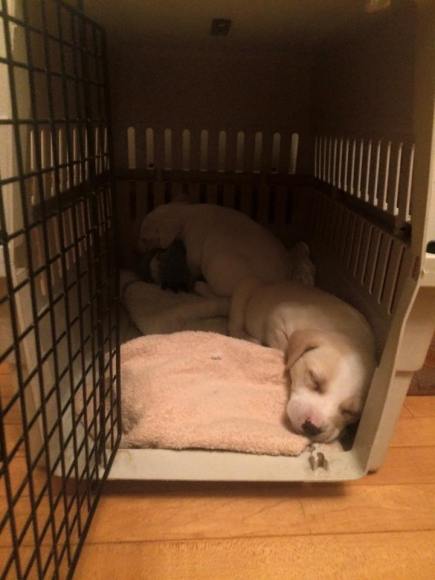
There are many ways you can get dogs used to a kennel–it can be as simple as always feeding them inside of it, to Crate Games, leaving the door open while training them, teaching them to ‘kennel up’ on cue, etc. The Karen Pryor Clicker Training website has a great break-down of the when, why, and how of kenneling.
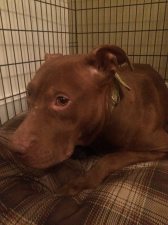
Jonah has been largely excellent in his kennel since we got him. Initially, it was the only place he felt safe and he would struggle to get back inside his crate if he was taken out of it. He would softly whine for a few minutes after being put in the kennel but would quickly relax and go to sleep. As he became more comfortable with the house, he decided he did not want to spend time in the kennel as much. At that point, he was sleeping in a beat-up old wire kennel and unfortunately he discovered how to escape that kennel, regardless of how many zip-ties we put on it.
After that, the rescue got a sturdy plastic kennel (like the one above that the puppies are sleeping in). He started balking at going in the kennel and we began feeding him in the kennel to help him have positive associations. He did very well in that kennel (sleeping quietly after an obligatory whine or two) until he didn’t. The night of his last growl was a pretty stressful night and he was put into his kennel as a ‘time out.’ Looking back on things, I wish I had put him on a tie-down away from the family instead of in his safe-space when he was upset. The next morning when I left for work, he seemed to be resting comfortably in his kennel. About an hour later when my partner came downstairs, he was loose in the house, his nose was cut up and his muzzle was bloody and swollen. He had broken the metal kennel door in several areas and muscled his way through to escape.
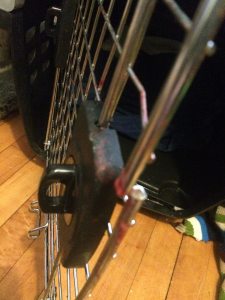
My partner was able to pick up an emergency kennel from the rescue later that morning (Pet Haven has been so helpful!) so that she could leave him to go to work. By the time I got home (a few hours later), Jonah was still in the kennel (because it had been semi-barricaded in and would have been pretty difficult to get out of at that point) but there was a moderate amount of blood running down the side. We knew Jonah couldn’t stay in that kennel because he would continue to hurt himself by raking his nose across the crate door and there is no question he would escape from the kennel again (and potentially injure himself more significantly in the process). The day of his escape he was a giant, tense ball of anxiety. We did what we could to help him relax (some physical exercise, some cuddling, having Frankie sleep in a different room so that Jonah could share the bed with us) and it has seemed to work. It took a day or two but he seems to be ‘himself’ again. Or at least Jonah as we know him.
We were left with a dilemma: How to safely contain him.
When left completely out on his own, he can be destructive, eats things he’s not supposed to, and forgets his house-training manners–so we couldn’t just leave him in a room. In the past, we fostered a dog with severe separation anxiety and the rescue that we were with at the time had something called an “Alcatraz kennel” by ProSelect that was extremely sturdy and didn’t seem to have sharp edges or dangerous features.
I asked the local rescue community if anyone had one available (because they can be about $400 new) that we could borrow for Jonah–and within an hour a local animal rescue hero had a brand new-in-box similar kennel that we could come pick up. Once we got home and set it up, it was pretty evident that although the kennel looks almost identical to the other kennel, it had some features that made it unlikely to be able to hold Jonah and if he tried to escape he would probably hurt himself.
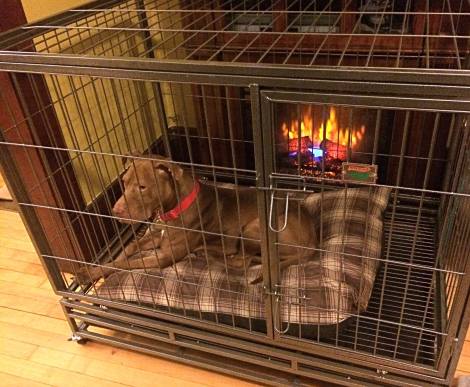
You can see this kennel (“Heavy Duty Dog Crate Kennel by Go PetClub”) initially looks extremely sturdy but when you look closer, the wires are actually very thin (and weaker than the wires on the first kennel he was able to escape from). The latches were loose and insecure. I grabbed onto the kennel and shook it like a dog would when trying to escape and the whole thing rattled. The kennel would most likely be just fine for a dog who didn’t challenge any boundaries but for other, more motivated dogs (who need ‘heavy duty’ kennels), the crate wouldn’t do.
So I went back to the Minnesota rescue community and asked if anyone had the secure, thick-barred version. Within a few minutes, a volunteer from Minnesota Boxer Rescue came forward and said we could use theirs as long as we gave it back if they had a boxer come in that needed it. While lending a crate doesn’t seem like much, it is a big deal when it is a brand-new $400 kennel and you are lending it to someone you don’t know because you want to help a rescue dog in need. I can’t thank MN Boxer Rescue enough.
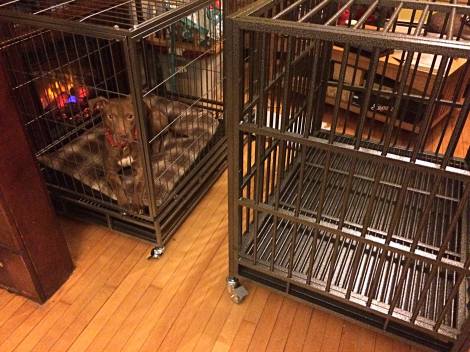
Photo: The differences in the crates are almost not noticeable unless they are right next to each other. When you try to shake Alcatraz, nothing moves.
We spent the rest of the night acclimating Jonah to his new kennel and trying to make it a safe place for him. We put a Kong in the kennel, tethered him to the area outside of the kennel and left the door open so he could climb in if he wanted. At first he was tentative but by the end of the night he was snoring on his bed inside of “Alcatraz.” We will do what we can to encourage Jonah to have strong positive feelings about his kennel and hopefully we will be able to start using a regular kennel again for him in the future.
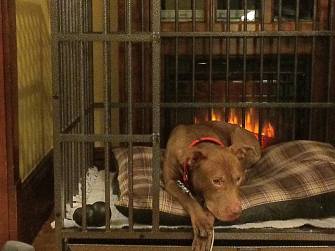
Note: I have mixed feelings about kennels like “Alcatraz” because on the one hand, they can ‘safely’ confine dogs that are difficult to contain. (I put safely in quotes because I have heard of dogs breaking their teeth on the bars, but that can happen with any kennel.) Why I am conflicted about them is because some people will buy them for their dogs with separation anxiety and pop the dogs in there. This may save their house but it does nothing for the dog’s emotional state and can be extremely hard on them. The solution for a dog with separation anxiety is NEVER to just put them in something they absolutely can’t break out of. I get anxiety just thinking about a dog that is desperate and trapped and personally consider confinement-based ‘treatment’ of separation anxiety cruelty. Besides a safe place to leave the dog, you must work on a slew of things including counter-conditioning your leaving cues (changing the dog’s emotional response) and medication is often necessary (especially at the beginning).

Thank you Adam, this is so helpful. My sons new dog Mona, had terrible anxiety upon arriving in her new home with him. The anxiety was mostly when he left for work. He would come back 4 hours later on lunch break for a walk and time with her, and then leave till about 4 or 5 that night.
She tore up the crate, humped over the barrier gate, ripped up the window blinds in every window. He decided it was best not to push the kennel, but continued to use the kitchen with the Barrier as a time out place when she barked at neighbors out the front windows- only when he was home. We were on the verge of getting a sturdier crate, when her anxiety just sort of subsided. I knew about The Alcatraz. It’s a good kennel. We will try kenneling again
LikeLike